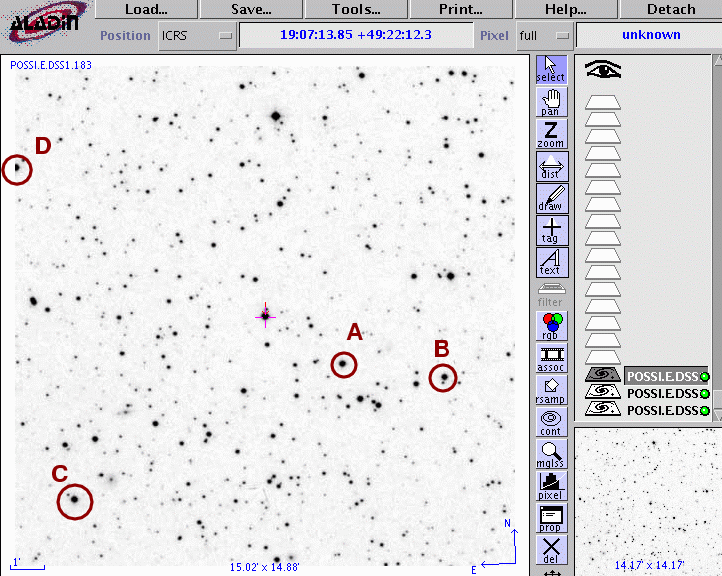
On the night of UT Apr 16, 2008, the SDSS Photometric Telescope ("PT" for short) took a series of exposures of TrES-2. We lost the ingress to noise due to clouds, and the egress to a gap in the observing sequence. Argh.
Notes from the night
This is a chart of the field. TrES-2 is the bright star indicated by the crosshairs. The labelled stars will appear in later analysis.

The host star of TrES-2 has a magnitude V=11.41 according to TrES-2: The First Transiting Planet in the Kepler Field.
Following the procedures outlined by Kent Honeycutt's article on inhomogeneous ensemble photometry, I used all stars available in each image to define a reference frame, and measured each star against this frame. You can find the software package used to do the ensemble photometry online; it's free!
The night was not clear, as the plot below shows. The graph below shows the amount by which instrumental magnitudes from each image needed to be shifted to match the ensemble reference. On a clear night, this graph would show a straight horizontal line.
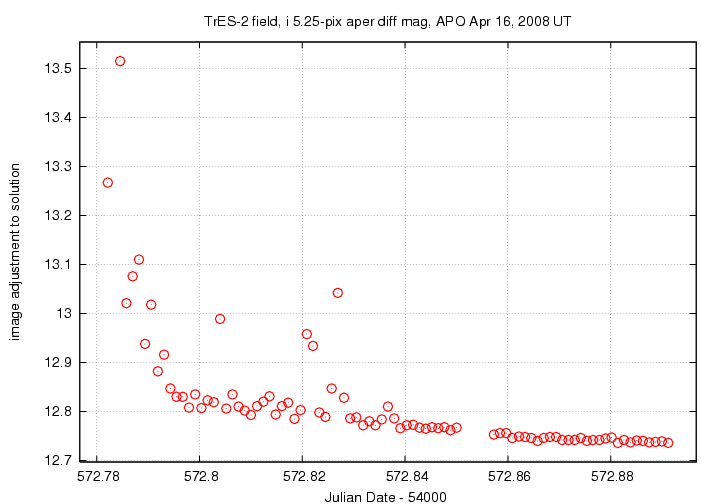
Below is a graph of the scatter in differential magnitude versus magnitude in the ensemble solution.
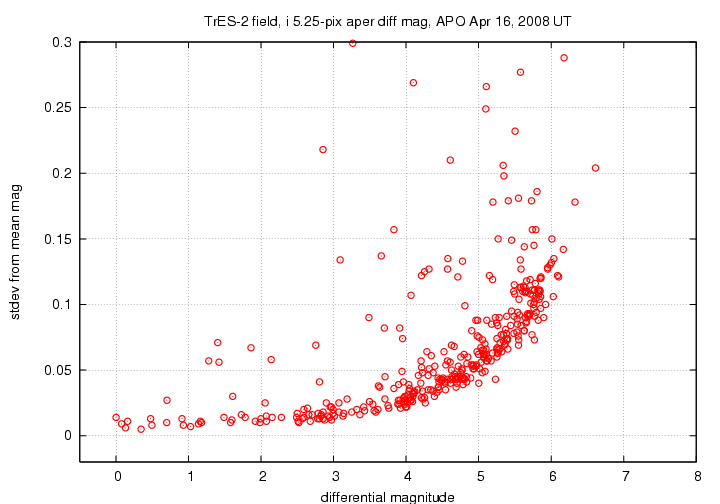
TrES-2 is the star at differential mag 0.08; it ought to show a small excess of scatter over neighboring stars of the same brightness, but doesn't due to the clouds. The "noise floor" in these measurements is about 0.006 mag -- bad for APO transit work.
Below are the light curves for the target (green symbols) and four comparison stars in the field.
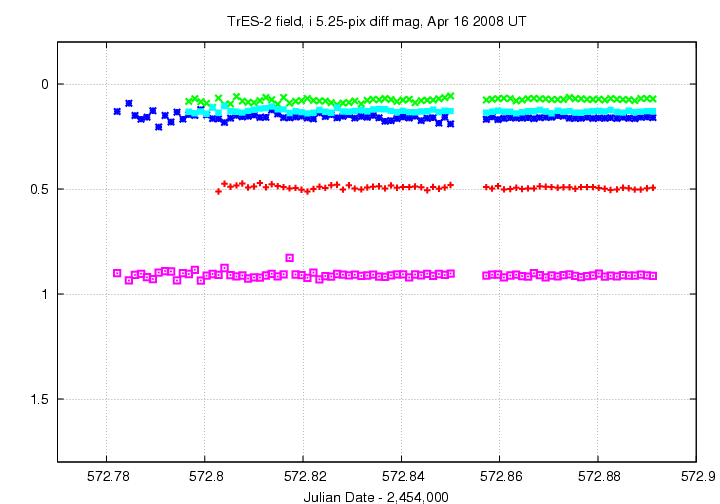
In this closeup, I have shifted the data for two comparison stars to move them closer in magnitude to the target.
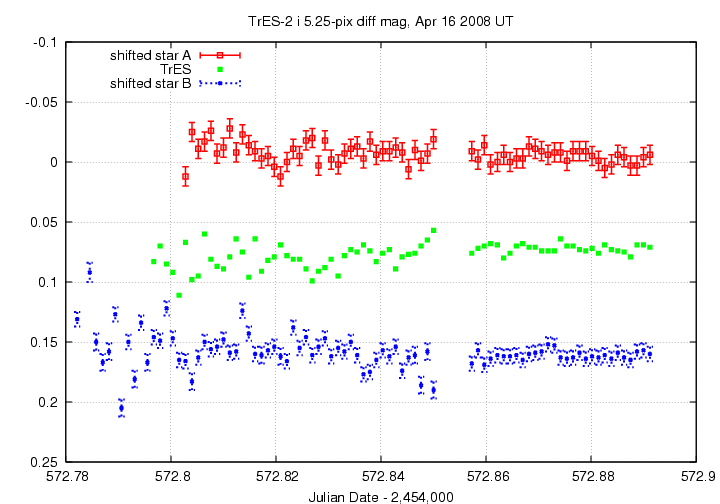
An ephemeris grabbed from transitsearch.org predicts for this night
----------------------------------------------------------------------------------------
Begin Transit Window PREDICTED CENTRAL TRANSIT End Transit Window
All Times UT
HJD Year M D H M
2454572.79 2008 4 16 6 54 2454572.82 2008 4 16 7 44 2454572.86 2008 4 16 8 34
----------------------------------------------------------------------------------------
The ephemeris ingress of UT 2008 Apr 16 06:54:00 corresponds to JD 2,454,572.788, which occurs during the very cloudy portion of the run, when we had no good measurements. The ephemeris egress of UT 2008 Apr 16 08:34:00 corresponds to JD 2,454,572.857, which occurs during the gap in measurements (caused by some software or operations error, I think). In other words, I think that we really don't get any useful information from this night.
You can grab the measurements for your own analysis. Below is a table with three flavors of time, plus the differential magnitude of the target and an estimate of the uncertainty in each measurement. I show the first few lines of the file to give you an idea of its format.
# Measurements of TrES-2 made with APO PT, Apr 16, 2008 UT. # Each exposure 20 seconds long in SDSS i-band; # Tabulated times are midexposure (FITS header time - half exposure length) # and accurate only to +/- 1 second (??). # 'mag' is a differential magnitude based on ensemble photometry # using a circular aperture of radius 5.25 arcseconds. # # UT day JD-2,450,000 HJD-2,450,000 mag uncert Apr16.79675 4572.79675 4572.79647 0.083 0.008 Apr16.79796 4572.79796 4572.79768 0.070 0.008 Apr16.79918 4572.79918 4572.79890 0.085 0.008
Last modified 05/04/2008 by MWR.